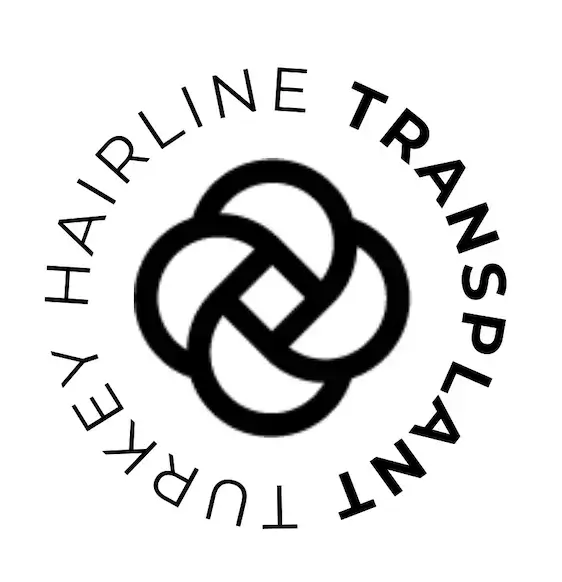Genetic hair mapping has emerged as a revolutionary tool in the fight against hair loss. Hair loss is a common concern for many people, affecting both men and women across the globe.
While the causes of hair loss are varied, one of the most significant factors is genetics. Over the years, advancements in genetic research have paved the way for genetic hair mapping, a cutting-edge technology that delves into the genetic underpinnings of hair loss and provides personalized solutions tailored to an individual’s unique genetic makeup.
In recent years, genetic hair mapping has gained traction as an effective way to predict and understand how genetic factors contribute to hair thinning and baldness.
This article delves into genetic hair mapping, explaining how it works, its benefits, its applications in modern treatments, and the future of this innovative approach in the ongoing battle against hair loss. Through personalized insights, genetic hair mapping is transforming the way we approach hair care and restoration.
Understanding the Science Behind Genetic Hair Mapping
What is Genetic Hair Mapping?
Genetic hair mapping is a cutting-edge process that analyzes a person’s genetic makeup to identify specific markers related to hair health and hair loss.
This method involves extracting DNA, typically from a saliva sample or a small hair follicle, which is then analyzed in a lab to detect the presence of genes associated with hair thinning or balding. The insights gained from this analysis can provide a deeper understanding of an individual’s genetic predisposition to hair loss.
At its core, genetic hair mapping helps identify the unique genetic profile of an individual, focusing on genes related to hair follicles, scalp health, and the production of hair proteins. It’s a precise, data-driven way to predict how a person’s hair might change over time.
The Role of Genetics in Hair Loss
Genetics plays a pivotal role in determining how and when hair loss occurs. Androgenetic alopecia (commonly known as male and female pattern baldness) is one of the most common genetic causes of hair loss.
It is influenced by the androgen receptor gene, which regulates how the body responds to male hormones like testosterone. Other genes may impact hair density, follicle health, and the rate of hair growth.
For individuals experiencing one-sided hair loss, understanding their genetic predisposition can provide valuable insights. Many people notice a specific pattern in which hair loss occurs predominantly on one side of the scalp, and this can be linked to their unique genetic markers.
With genetic hair mapping, it is now possible to pinpoint whether someone is genetically predisposed to experience more aggressive hair loss on one side of the head, giving them the knowledge needed to seek appropriate treatments and avoid unnecessary guesswork.
How Genetic Hair Mapping Works
The process of genetic hair mapping typically begins with a DNA sample collection. This can be done through a simple saliva test or by collecting a few strands of hair. The sample is then sent to a specialized laboratory where it undergoes analysis to identify genetic markers associated with hair loss. The results are typically returned to the client in the form of a comprehensive report that outlines the genetic factors influencing their hair health.
This technology is not only about identifying the potential for hair loss but also about providing insights into the kinds of treatments that may be most effective. For instance, individuals who carry genes associated with rapid androgenetic alopecia might benefit from early intervention with targeted hair loss treatments, such as minoxidil or finasteride, while others might require a more intensive approach.
Benefits of Genetic Hair Mapping
Personalized Hair Care Plans
One of the most significant advantages of genetic hair mapping is the ability to create a personalized hair care plan based on an individual’s unique genetic profile.
Rather than relying on general treatments, which may or may not be effective, people can opt for a treatment plan specifically tailored to their genetic needs. This could include personalized recommendations on hair care products, medications, or lifestyle changes that might help slow down or prevent hair loss.
Predictive Insights
With genetic hair mapping, individuals can gain valuable predictive insights into how their hair might change over time. For example, someone with a genetic predisposition to male pattern baldness might learn that they are at higher risk of losing hair as they age, even if they’re currently not experiencing noticeable thinning.
This early warning allows people to take proactive measures to address hair loss before it becomes severe.
In addition, knowing one’s genetic predisposition can also help to identify whether certain areas of the scalp, like the crown or temples, are more vulnerable to thinning. This can be especially important for those noticing one-sided hair loss, where genetic mapping could provide a clear picture of what to expect in the future.
Avoiding Ineffective Treatments
Another key benefit of genetic hair mapping is that it helps avoid ineffective treatments. Many people spend money on various hair loss products and treatments without understanding why they are not working.
By analyzing their genetic makeup, individuals can identify the most effective treatments for their specific condition, thus saving time and money on products that are unlikely to work for them.
For example, someone whose genetic profile shows that they are resistant to a particular medication may choose to focus on other options, such as hair transplant for long hair, which could offer a more permanent solution.
Empowering Patients with Information
One of the most empowering aspects of genetic hair mapping is that it puts the power of knowledge in the hands of the patient. Instead of relying solely on doctors or hair experts to make recommendations, individuals can take an active role in managing their hair health.
By having access to personalized genetic insights, patients can feel more confident in their decision-making process, whether they are choosing to undergo medical treatments, lifestyle changes, or hair transplant for long hair procedures.
Current Applications and Technologies in Genetic Hair Mapping
Genetic Testing Kits
As genetic hair mapping continues to grow in popularity, several companies now offer at-home DNA testing kits designed specifically for hair loss.
These kits typically require users to submit a DNA sample, which is then analyzed for genetic markers associated with hair thinning and balding.
Popular companies like 23andMe and DNAFit offer genetic testing that can provide insights into a person’s predisposition to hair loss and the effectiveness of certain treatments.
These genetic tests are an affordable and accessible way for people to begin understanding their hair health. Although they don’t replace professional consultations, they can serve as a starting point for those seeking more tailored advice on managing their hair.
Integration with Modern Hair Treatments
Genetic hair mapping is not just about providing genetic data; it is also helping integrate this data into modern treatments. For example, many clinics now offer personalized hair loss treatments based on genetic testing. This can include prescription medications, topical treatments, and even advanced procedures like hair transplant for long hair.
Hair restoration clinics are increasingly using genetic hair mapping as a way to customize their approach to each patient.
For example, some people may benefit from PRP (Platelet-Rich Plasma) therapy, which is used to stimulate hair growth, while others may require a different approach. By understanding the genetic factors at play, hair clinics can refine their treatments for better results.
Advancements in Technology
With the rise of artificial intelligence and machine learning, genetic hair mapping is becoming more accurate and efficient. Algorithms are being developed to predict hair loss patterns with even greater precision.
As these technologies advance, we can expect even more personalized and targeted treatments to emerge, making hair loss solutions more effective than ever.

Potential Risks and Considerations
Privacy Concerns
While genetic hair mapping offers significant benefits, it also raises privacy concerns. Genetic data is highly sensitive, and sharing this information with third parties poses risks, especially if data is misused or sold without consent.
The information derived from genetic testing can not only provide insights into hair loss but also reveal details about other health conditions or genetic predispositions, including susceptibility to diseases.
As genetic hair mapping becomes more popular, companies offering these services must implement strict privacy policies to safeguard personal data. Clear communication about data storage, access, and duration of retention is essential.
Additionally, robust security measures are needed to prevent breaches or cyberattacks. Adherence to privacy laws, such as GDPR, is critical to maintaining consumer trust.
Accuracy and Limitations
Genetic hair mapping is still evolving, and while it offers valuable insights, it is not an exact science. The genetic markers linked to hair loss are being continuously studied, and not all predictions are definitive.
For example, a person might carry genetic markers for hair thinning but not experience noticeable loss, while someone without those markers may still suffer hair loss due to lifestyle or environmental factors.
Furthermore, genetic hair mapping does not account for external influences such as diet, stress, and hormones, which can all impact hair health. It’s crucial to combine genetic data with other diagnostic tools to form a well-rounded approach to hair care and avoid over-reliance on genetics alone.
Cost and Accessibility
The cost of genetic hair mapping and subsequent treatments can be prohibitive for many. While at-home testing kits may be affordable, professional services—especially those offering detailed genetic analysis and customized treatment plans—can be quite expensive.
Costs can quickly escalate when additional treatments like medications or hair transplants for long hair are involved.
Access to these services may also be limited in rural or underserved areas, where specialized clinics are few and far between. Even in more accessible locations, high treatment costs can create a divide between those who can afford personalized care and those who cannot, further deepening health inequalities.
Ethical Considerations
As the field of genetic hair mapping expands, ethical issues arise, particularly regarding the use of genetic data. There’s concern that insurance companies might use genetic information to adjust premiums or deny coverage, potentially leading to discrimination based on an individual’s genetic risk of hair loss.
While hair loss itself is not life-threatening, the potential for such data to influence other aspects of life, such as insurance and employment, warrants careful regulation.
Moreover, with advances in gene-editing technologies like CRISPR, the possibility of altering genes related to hair loss presents ethical dilemmas. While gene editing could provide permanent solutions for hair loss, it also raises concerns about unintended consequences, making it essential for regulatory frameworks to evolve alongside these technologies.
Psychological Impact
For some, learning about their genetic predisposition to hair loss through genetic hair mapping can have psychological effects. While many individuals may feel empowered by the knowledge, others may become anxious or distressed, especially if the results suggest they are at high risk for significant hair thinning or loss.
This emotional response may lead some to rush into aggressive treatments or even consider hair transplants for long hair, which might not be necessary or appropriate.
Clinics offering genetic hair mapping should provide counseling and emotional support to help clients process the results and make informed decisions about their next steps, ensuring that they do not make hasty choices based solely on genetic data.
Unregulated Industry Growth
As the demand for genetic hair mapping services increases, there’s a growing risk of low-quality or unregulated providers entering the market. Not all genetic tests are equal, and some companies may offer inaccurate or misleading results.
Consumers need to research and choose reputable providers who use scientifically validated methods to ensure that they are receiving reliable information.
Additionally, as new technologies emerge, there is a risk of overhyped treatments promising unrealistic results based on genetic mapping. Consumers should be cautious and recognize that genetic hair mapping is just one piece of the puzzle in managing hair health, rather than a guaranteed solution..
The Future of Genetic Hair Mapping
The future of genetic hair mapping is incredibly promising. As technology continues to advance, we can expect even more precise and personalized treatments for hair loss.
For example, gene therapy, CRISPR technology, and other advanced genetic techniques may one day offer permanent solutions for those struggling with severe hair loss, providing hope for individuals who may have previously been considered beyond the reach of current treatments.
These breakthroughs could potentially alter the very structure of hair follicles, stimulating growth at a genetic level and even reversing baldness in ways previously thought impossible.
Moreover, the evolution of artificial intelligence (AI) and machine learning is enhancing the accuracy of genetic hair mapping, allowing for better predictions and customized treatment plans. These innovations are likely to lead to the creation of fully automated systems that can recommend treatments in real time based on a person’s unique genetic profile.
As genetic hair mapping becomes more widely adopted, the use of genetic data in hair care will move beyond just diagnostics. We could see a significant shift toward genetic-based preventative measures, where individuals, based on their genetic makeup, can start early treatment regimes before significant hair thinning occurs.
Additionally, the increasing awareness of the power of genetic insights will likely spark a broader cultural shift toward data-driven, personalized approaches to managing hair health.
This trend could lead to a future where routine hair care is no longer just about topical treatments but a holistic, genetically informed strategy that ensures long-term scalp and hair vitality. This will undoubtedly make hair loss treatments not just more effective but also more accessible and tailored to individual needs, marking a new era in hair restoration.
Conclusion
Genetic hair mapping is a revolutionary approach to understanding and managing hair loss.
By providing personalized insights into a person’s genetic makeup, it empowers individuals to take control of their hair health.
Whether it’s through personalized treatments, early intervention, or hair transplant for long hair, genetic hair mapping is transforming the way we approach hair loss solutions.
As technology continues to advance, the future of genetic hair mapping looks even brighter, offering new hope to those struggling with hair loss and related concerns.














